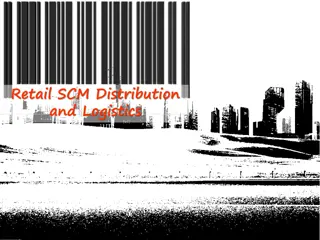Understanding the Distinction in Financial Services: Retail vs Professional
The financial services industry consists of two distinct areas - professional and retail business. Professional services focus on international and investment banking, while retail services cater to individual consumers with offerings like current accounts and mortgages. In foreign exchange, retail customers pay higher prices compared to professional clients. This article delves into the differences in treatment and pricing between retail customers and professional clients in the financial services sector.
Download Presentation

Please find below an Image/Link to download the presentation.
The content on the website is provided AS IS for your information and personal use only. It may not be sold, licensed, or shared on other websites without obtaining consent from the author. Download presentation by click this link. If you encounter any issues during the download, it is possible that the publisher has removed the file from their server.
E N D
Presentation Transcript
CISI Financial Products, Markets & Services Topic The Financial Services Industry (1.1.2) Professional and Retail Business
Professional or Retail? There are two distinct areas within the financial services industry:
Professional or Retail? Financial service type Transaction Duty of care Size Price Typical services Focus on International banking, Investment Banking, Fund Management, Derivatives, IPOs, underwriting debt and equity offerings business to business transactions where both sides are businesses Less duty of care assumes buyers know what they are doing Larger transactions taking place Cheaper prices wholesale (Wholesale or Institutional) More expensive prices lower volumes traded Smaller transactions taking place business to consumer transactions where one side is an individual consumer Greater duty of care - Buyers are given a cooling off period as it is assumed they do not always know what they are doing Focus on commercial banking -current accounts, savings, insurance, mortgages, loans, credit cards, investing in pensions, investment services, financial advice
Retail and Professional Business in Foreign Exchange What is the Foreign Exchange Market (forex or FX)? The Trading of one currency for another
Retail and Professional Business in Foreign Exchange calculating exchange rates Example exchange rate calculation A retail customer who is planning a day trip to France has 100 and he wants to convert the money into Euros. He visits his local bank and sees that the bank is quoting the following: Bank buys Bank sells GBP/EUR 1.32 1.15 Q1. If the customer is converting GBP into Euros, will he be given the quoted Bank buys or Bank sells rate? The customer will be given the Bank sells rate as he is buying currency from the Bank. If he was changing his Euros back into GBP on his return, he would be quoted the Bank buys rate. Q2. How many Euros will the customer get for his 100 100 x 1.15 = 115
Retail and Professional Business in Foreign Exchange Retail vs. Professional Activity Conclusions How are retail customers and professional clients treated differently? Prices tend to be higher for retail customers in comparison with professional sector customers. Retail customers pay more to buy another currency than professional clients. Retail customers get less than professional clients when they sell one currency for another. The difference in the bank buys and bank sells quoted rates for retail customers is a major source of profit for the banks. Why do you think this is the case? Where professional clients are involved, the percentage profit margin generated is far less in comparison but the quantity and sums involved are much more substantial. Professional clients have to enter transactions that meet or exceed a certain minimum quantity( lot size) Often transactions are much bigger than the minimum amount most professional foreign exchange transactions are in lots of 8 to 10 million units.























